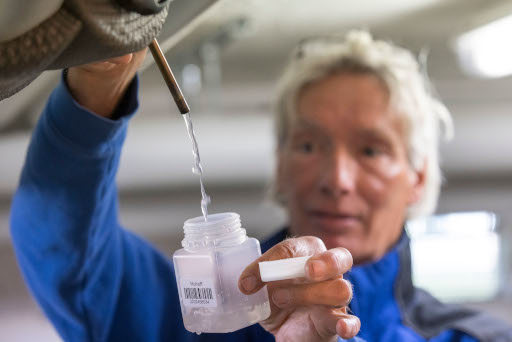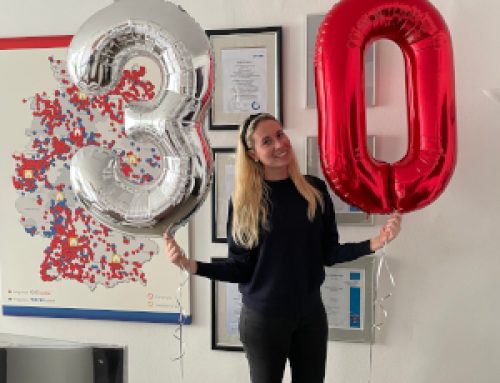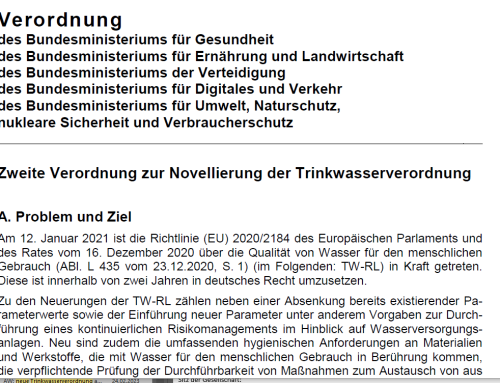Germany was required to implement the requirements set by the EU Drinking Water Directive, which came into force on January 12, 2021, by January 12, 2023. This included, among other things, the introduction of the so-called risk-based approach to safe water for all water suppliers and the establishment of minimum hygiene requirements for materials and substances in contact with drinking water.
With some delay, the new Drinking Water Ordinance passed the Federal Council on March 31, 2023. After an unusually long wait of almost 3 months, she was released on June 23, 2023, was published in the Federal Law Gazette and entered into force one day later, on June 24, 2023, in force.
The second ordinance amending the Drinking Water Ordinance is the first profound and comprehensive revision of the ordained drinking water law, introducing new topics and also a new system, which, according to the Federal Ministry of Law, should be more user-friendly than that of the old ordinance.
The result is a process-oriented structure with 72 paragraphs, divided into 16 sections and 7 appendices, which leaves no stone unturned. We would like to take this opportunity to explain the changes and innovations that we believe are relevant to the housing industry.
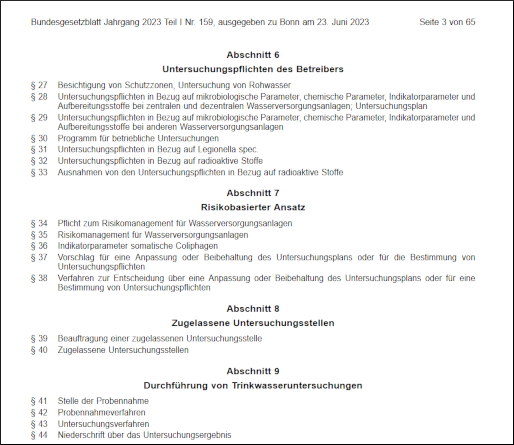 The highlights in a nutshell:
The highlights in a nutshell:
- The technical action value (TMW) now only has to be “reached” again to trigger action. In this regard, the technical threshold value for Legionella is once again set at 100 CFU/100 ml (colony-forming units per 100 milliliters) under the new Trinkwasserverordnung. This means that if the Legionella concentration exceeds this threshold, appropriate measures must be taken to address the issue and ensure the safety of the drinking water.
- The term ‘Unternehmer und sonstige Inhaber’ disappears, it will now be called ‘Anlagenbetreiber’. Systems in residential buildings are called “building water supply systems”.
- The obligation to conduct Legionella investigations can now be found in § 31. The legal definition of ‘Großanlage’ has been incorporated here.
- Sections 39 and 40 govern the appointment of an approved testing agency A new “Drinking Water Testing Agency Ordinance” will regulate which requirements will apply for approval in the future.
- The old regulations regarding risk assessment are now included in Section 51. The term “hazard analysis” is now called “
Risk assessment
” with partly new obligations. - The newly created § 17 contains a
removal requirement for lead pipes.
These must be completely removed from installations by January 12, 2026; upon application and in the case of building supply systems, the deadline can be extended to January 12, 2036 under certain conditions.
Ultrafiltration
is not approved as a disinfection process.- new structure & systematics: sections 6 & 11 regulate obligations of the plant operators
The technical measure value was set at
100 colony forming units (CFU)
per 100 ml of drinking water when it comes to remedial action being triggered. This change had become necessary after the EU noticed that the limit value for drinking water of 1,000 CFU per 1 liter was not being complied with in Germany insofar as measures only had to be initiated when it was exceeded. Consequently, the “old” status at the time of the introduction of the legionella testing obligation in 2011 is restored. All paragraphs that said “exceed” or “exceeding” under the version in effect until June 23, 2023, have been corrected accordingly. This relates not only to the obligation to conduct a risk analysis, but also to the obligation of the inspection bodies to report to the competent health authority in the context of systemic testing for legionella.
The lowering of the technical action value in its capacity as a “trigger value” should in principle – especially in conjunction with the more sensitive nutrient medium introduced in March 2019 – lead to even more Legionella findings in the future, since 100 CFU findings are now also reportable again and trigger action. Fortunately, the Federal Environment Agency has put a stop to this and already updated the recommendation on the investigation procedure and the indication of the result on December 9, 2022 – in the interest of the plant operator.
In its update of December 9, 2022, the UBA states that the new version of the Drinking Water Ordinance in Section 51 regulates the obligations of operators of water supply systems with a drinking water installation to take measures when the technical measure value is reached. This innovation must be taken into account and implemented in the evaluation of results by drinking water testing bodies on test reports as well as by the operators of the water supply systems concerned.
According to DIN EN ISO 8199:2021-126, the evaluable number of target colonies on a plate depends on the respective method, the colony size, the type of colonies and the presence of non-target colonies. Only those colony numbers for which there is sufficient statistical certainty are to be stated in the test report. Therefore, a statement regarding the specification of a minimum number of target colonies that can be evaluated is added to the previous wording below.
To indicate a clear quantitative result, only plates should be evaluated that are
- not exceed a maximum count (target and non-target colonies) of 300 colonies per plate in the case of direct preparation and a maximum of 80 colonies on the membrane filtration plate, or
- at least one count of
3 confirmed colonies
of Legionella on the two plates of the direct approach or on the plate of the membrane filtration.
In fact, the following will disappear in the future
100 and 200 CFU findings
disappear completely.
Some of the terms in the Drinking Water Ordinance are changing. It certainly makes sense to dispense with the “entrepreneur or other owner of the water supply system”, the UsI, and to make it – as in other areas of building services – the plant operator to call. Whether the (e) facilities, which remain under No. 2 (e) by ordinal number, can really be called “
Building water supply system
” had to be called, everyone should decide for himself. Both terms are now legally defined in § 2. In contrast, the definition of large-scale facility has been omitted from § 2. It is now found directly with the legionella testing requirement.
§§ Sections 39,40 regulate the commissioning of an approved accredited drinking water testing body. Who is admitted is determined by the respective state lists of the individual federal states. When commissioning, it must be contractually ensured that the inspection body also immediately reports any exceedance of limit values and technical measure values to the operator.
Further details on the drinking water testing center are to be regulated by a drinking water testing center ordinance yet to be issued.
The paragraphs § 14 para. 3 and § 14b) for legionella are history. The obligation to test for legionella is now found in the newly created
§ 31
again. This is also logical, since according to the new system the obligations of the plant operator are laid down in section 6 in §§ 27 – 33. Building water supply systems appear here for the first time. The new version of § 31 creates facilitations: Thus, the
legal definition of a large installation
the determination of which triggers the obligation to inspect in the first place,
integrated
. The shorter deadline for newly commissioned plants is also stored here. This saves the user unnecessary leafing through the legal text or technical regulations.
The legal requirements for the sampling point and the testing and sampling procedure were deliberately separated. In substance, everything has remained the same: The plant operator must ensure that suitable sampling points, which are
representative sampling points
according to the
generally accepted rules
are sampled.
The verification of whether the generally accepted rules have actually been complied with is intended to facilitate the presumption of conformity under § 42: If for the systemic examination for legionella, the specifications of the DIN EN ISO 19458:2006, as under purpose b) and additionally the recommendation of the Federal Environment Agency “Systemic testing of drinking water installations for legionella according to the German Drinking Water Ordinance – sampling, testing procedure and indication of the result” mentioned in § 43 (5) have been observed, there is a legal presumption in favor of compliance with the generally accepted rules of technology. Since the sampling method used is one of the mandatory details of the test report (cf. § 44 No. 5), this is easy for the plant operator to check. In any case, the test reports known to us always contain the reference to 19458, as far as tests for microbiological examination purposes are concerned. Whether the UBA recommendations are additionally listed there is rather doubtful. The well-organized laboratory will have to supplement its reports in this regard after the amendment.
Section 43(5) refers to the recommendation from the Federal Environment Agency on systemic testing for legionella dated 18 December 2018. If this recommendation is revised and updated, the Drinking Water Ordinance would actually have to be amended so that the updated UBA recommendation would in turn have quasi “force of law”. Working with a dynamic referral is not legally possible. The matter is likely to be complicated if the UBA withdraws the old recommendation when it is updated (which would be the usual procedure). It remains to be seen how BMG and UBA will deal with this legal problem in the future.
However, not only legionella testing is included in a new paragraph, but also the obligation to take measures after exceeding/achieving the technical measure value (site inspection, cause investigation, hazard analysis) and – for the inspection bodies – to report these inspection results directly to the responsible health authority.
Thus, paragraphs 15a and 16 para. 7 TrinkwV now includes sections 51 and 53. Section 51 regulates the special duty to act after the technical action value (or other limit values) has been exceeded and does not contain – as originally envisaged in the draft bill – the duty to carry out further testing. On the home stretch of the legislative process, the Bundesrat refused to approve this obligation from the Bundesrat print bill. It has been dropped without replacement.
One of the most surprising changes is certainly the abolition of the concept of hazard analysis, which was previously required to get to the bottom of the causes for exceeding the technical measure value. As a special duty to act, the regulation now postulates a
written risk assessment
. This is to clarify that in the Drinking Water Ordinance the prevention concept (concern principle) prevails and that even when the legionella limit value is reached, a (concrete) health hazard does not yet have to have occurred.
In substance, little changes also because the written risk assessment to be carried out now is to follow the recommendations of the Federal Environment Agency for carrying out a hazard analysis. In this respect, we have not yet completely said goodbye to the dazzling concept of hazard analysis.
At the substantive level, a
systematic
identification and assessment of the risks and potential hazards identified. Thus, the written risk assessment goes further in the direction of expert opinions, a clear rejection of the quickly made “hazard analysis light”, some of which have been offered cheaply on the market in the past.
Another change is the rewording of the minimum content of the risk assessment with regard to laboratory findings: the results of tests for the parameter Legionella spec. including the indication of sampling points in the drinking water installation and the indication of
date and time of sampling
must be included.
This also reflects the fact that the newly titled hazard analysis is also a hygienic-technical inspection of the plant and, in the past, although technical defects were often well removed and incorporated in accordance with the generally accepted rules of technology, it was not uncommon for the findings to be simply attached as an annex without a detailed analysis of the findings situation.
Date and time of sampling
now replace the “time” of sampling. This change was necessary because, according to information from some health offices, some testing laboratories could only provide the sampling date, i.e. the day of the week the sample was taken, when asked. This is not sufficient for a systemic examination for Legionella at several representative sampling points to be able to make an expert assessment. Within the series of samples taken, it appears that sampling times were not recorded. Accordingly, the time becomes mandatory information.
This new requirement is now also included in the compulsory information to be provided by the laboratories to the competent health authority in the event of exceedance or attainment of action values (cf. Section 53 (2) No. 5). Also there it said “time of sampling” until recently.
With the former § 15a notification, everything else has remained the same according to § 53 n. F.. In a new paragraph 4, however, laboratories must make additional efforts and periodically report to the UBA the number of systemically tested drinking water installations in total and those with legionella contamination as well as the number of samples tested for legionella, for the first time by March 12, 2026, with regard to the respective preceding calendar year.
Depending on the degree of organization of the laboratory, this additional effort may well have an impact on analytical costs.
Health protection is consumer protection. The consumer’s rights to information were already extended in the last amendment. This is now reflected in §§ 45, 46 TrinkwV. Important for the housing industry is the consumer’s right to notification of results according to § 45: The operator of the respective water supply system shall provide the affected connection users and the consumers with Upon request, individual results of the drinking water tests even if they have already received information material pursuant to paragraph 1 or paragraph 2 or access to data pursuant to Section 46 (4).
Drinking water pipes made of
Lead
are to disappear completely from drinking water installations according to EU specifications. Not only complete pipelines are affected by the decommissioning or removal requirement, but also
line sections
. The housing industry will have to become active here, since after the deadline has expired – e.g. at the request of residents – proof of lead-free status will have to be provided.
The deadline for removal or decommissioning is set at
January 12, 2026
is deliberately short. It is at the discretion of the responsible health department to extend the deadline upon request if the system operator uses the water only for his or her own household or if the plumbing company contracted to remove the water is unable to do so because of
capacity reasons
cannot guarantee timely execution of the order. According to the BMG, the health authorities are to be restrictive in their decisions on renewal applications, i.e. they are more likely to reject applications without really good reasons. The time limit can be extended to a maximum of
January 12, 2036
can be extended.
Anyone who has to deal with the remediation of drinking water systems permanently colonized with Legionella will certainly have already dealt with the topic of disinfection. Since numerous studies have shown that it is not possible to safely bring operating temperatures down to below 55°C, one way to at least reduce the legionella and also nutrient application to near zero is to use ultrafiltration – by installing an appropriate system. In our opinion, this is not possible without further ado under the new Drinking Water Ordinance, since ultrafiltration is not included in the UBA’s §20 list of approved materials and disinfection processes in contact with drinking water.
However, this is necessary because Section 20(3) states:
(3) The Federal Environment Agency may specify in the list of permitted treatment substances and disinfection processes that ion exchangers, membranes, limescale protection devices, air and filter media for the treatment of drinking water that were used before June 24, 2023, may continue to be operated for a limited period of time, even if they do not meet the requirements under Section 20 (4). The Federal Environment Agency specifies the necessary conditions for temporary continued operation in the list of permitted treatment substances and disinfection processes.
The compromise solution proposed by the Federal Council for plants already in operation is now included in § 21 TrinkwV para. 4 + par. 5 regulated:
4) The health department may, upon application by the operator of a water supply system, approve exemptions from the requirements of Section 18 and Section 20(4) for the continued operation of membrane systems for the removal of pathogens in drinking water installations already in operation for research and testing purposes prior to June 24, 2023. The approval shall be limited in time and may be subject to conditions.
(5) Upon application by the operator of a water supply system, the public health authority may, in consultation with the Federal Environment Agency and with the consent of the competent supreme Land authority or another body competent under Land law, permit temporary exemptions from the requirements of Section 20 (2) No. 1 (a) and (b) until the end of 31 December 2025 at the latest if
1.
the operator, despite proven efforts, cannot obtain processing materials that meet the requirements for the respective processing purpose, or cannot obtain them in sufficient quantities, and
2.
the exceptional use of the treatment substance is suitable and necessary under the circumstances of the individual case in order to achieve a quality of the drinking water that meets the requirements of Section 2.
In our view, the continued operation of ultrafiltration plants without the prior involvement and approval of the Federal Environment Agency or the responsible health authority is therefore highly questionable. We recommend that all plant operators clarify the matter immediately with the relevant health authority, possibly with the involvement of the Federal Environment Agency.
Finally, we would like to mention that the changes presented here do not claim to be exhaustive, and represent only a selection of regulations that we believe are relevant to the real estate industry, and that we would be happy to provide more detailed information in person.
If you have any detailed questions, you can always contact our Executive Board member Marcus Pikarek or our Laboratory Manager Stefanos Anastasiadis (contact information can be found under Contacts).
The Drinking Water Ordinance, which came into force on June 24, 2023, is available for download here.
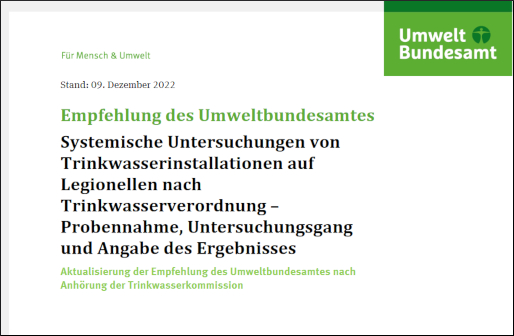
Link to the updated recommendation of the Federal Environment Agency
